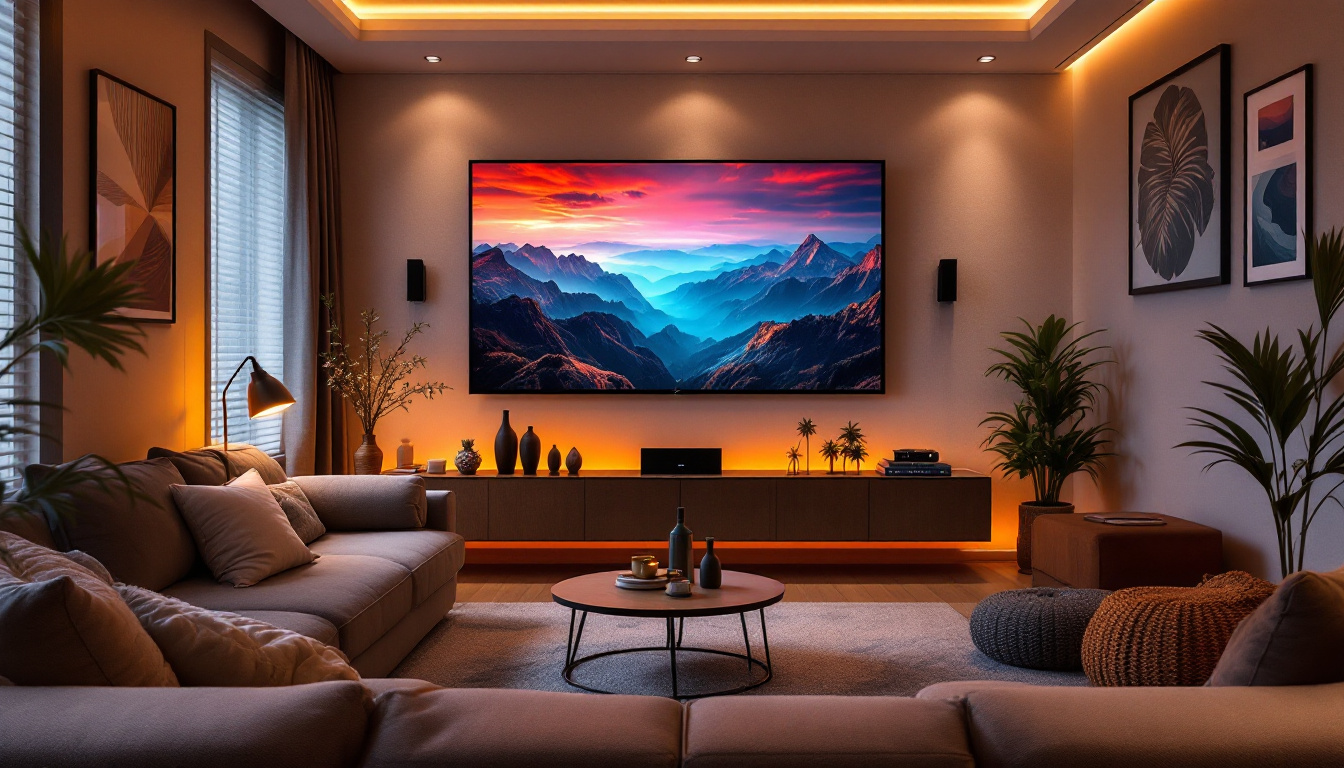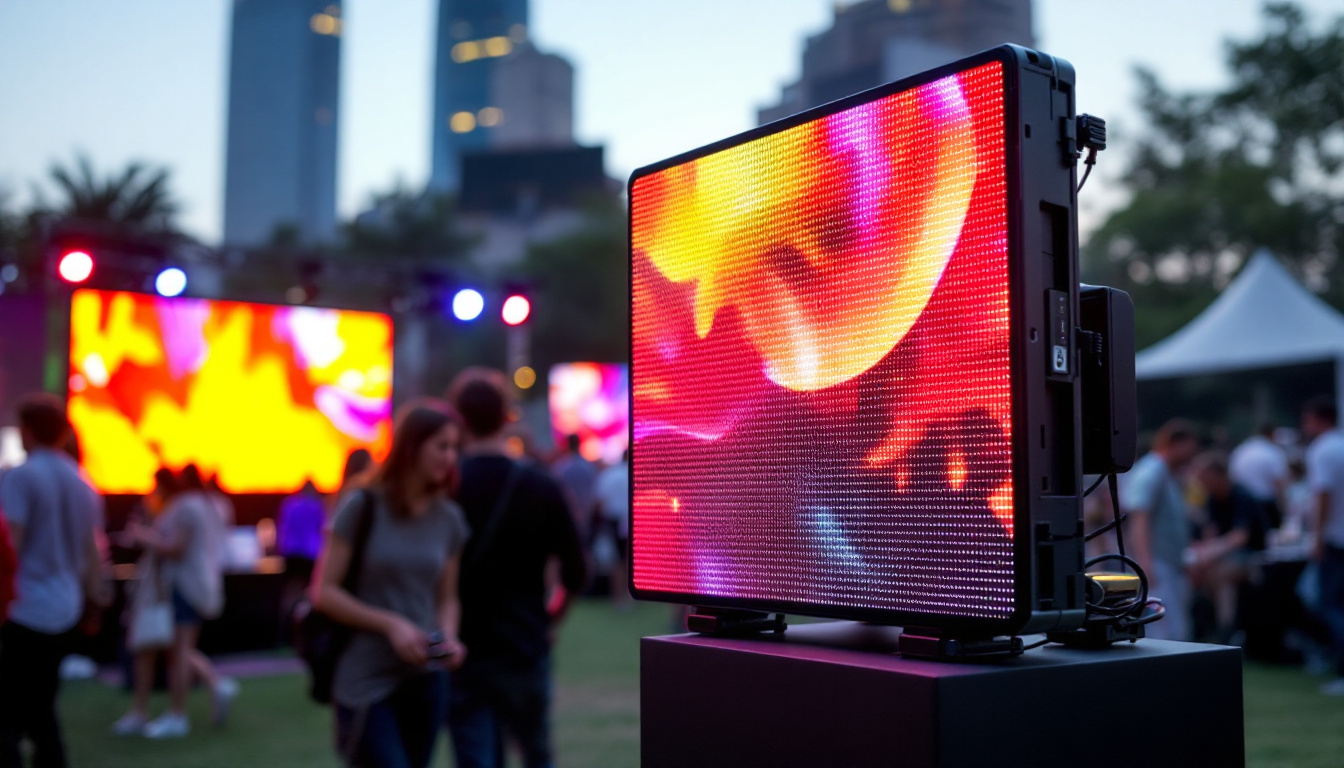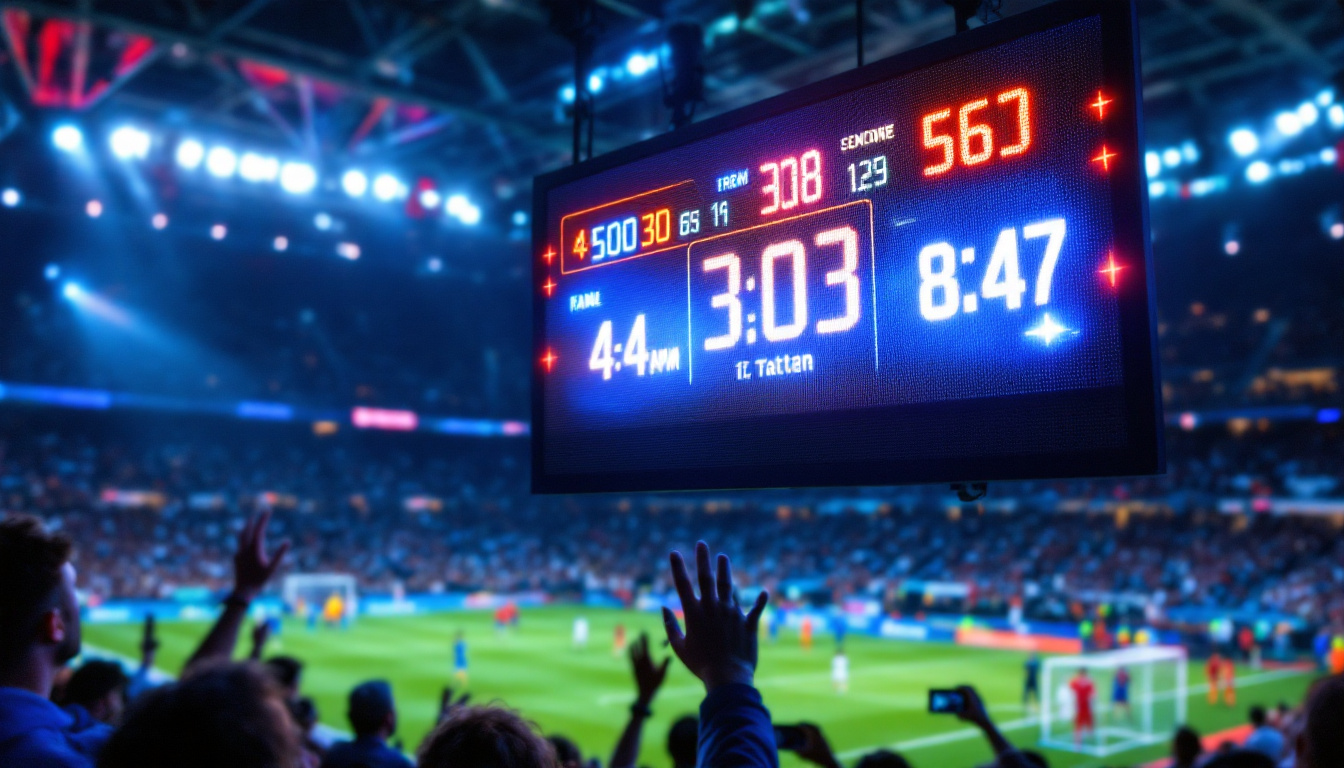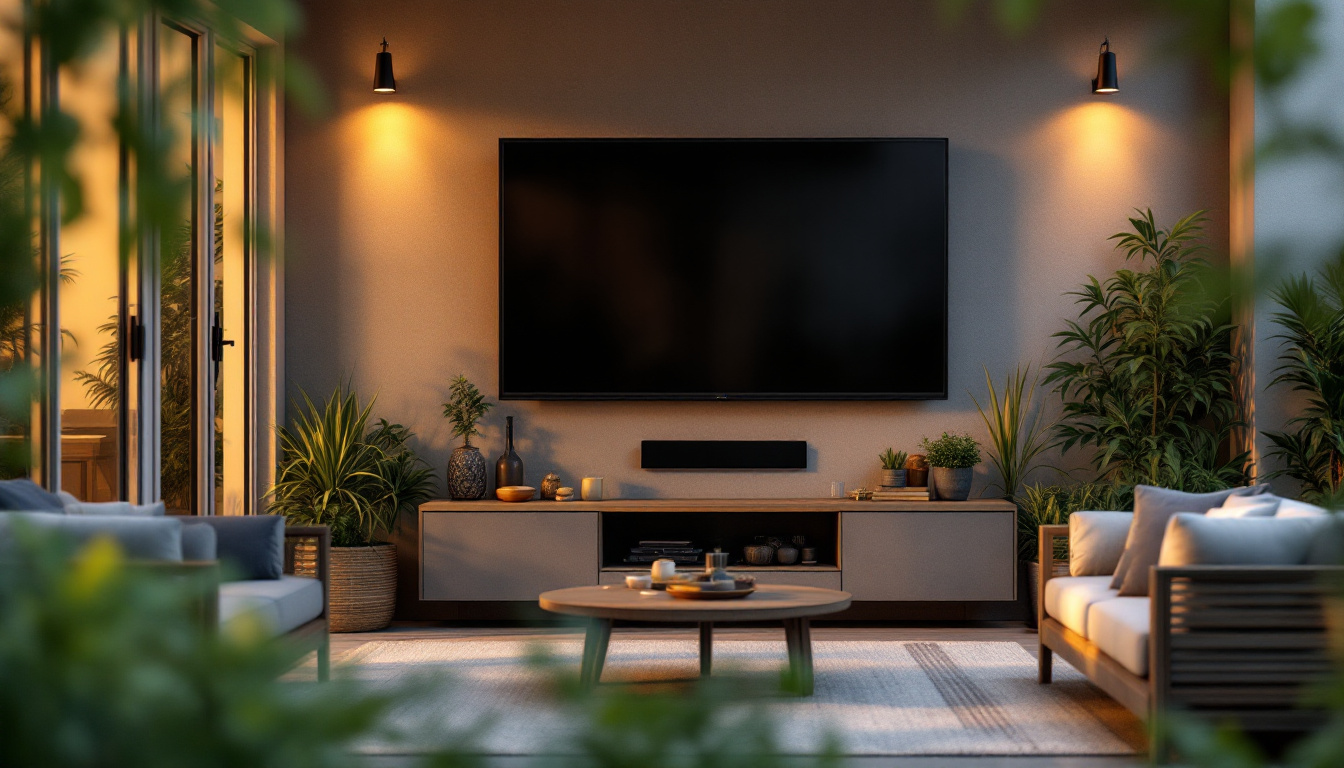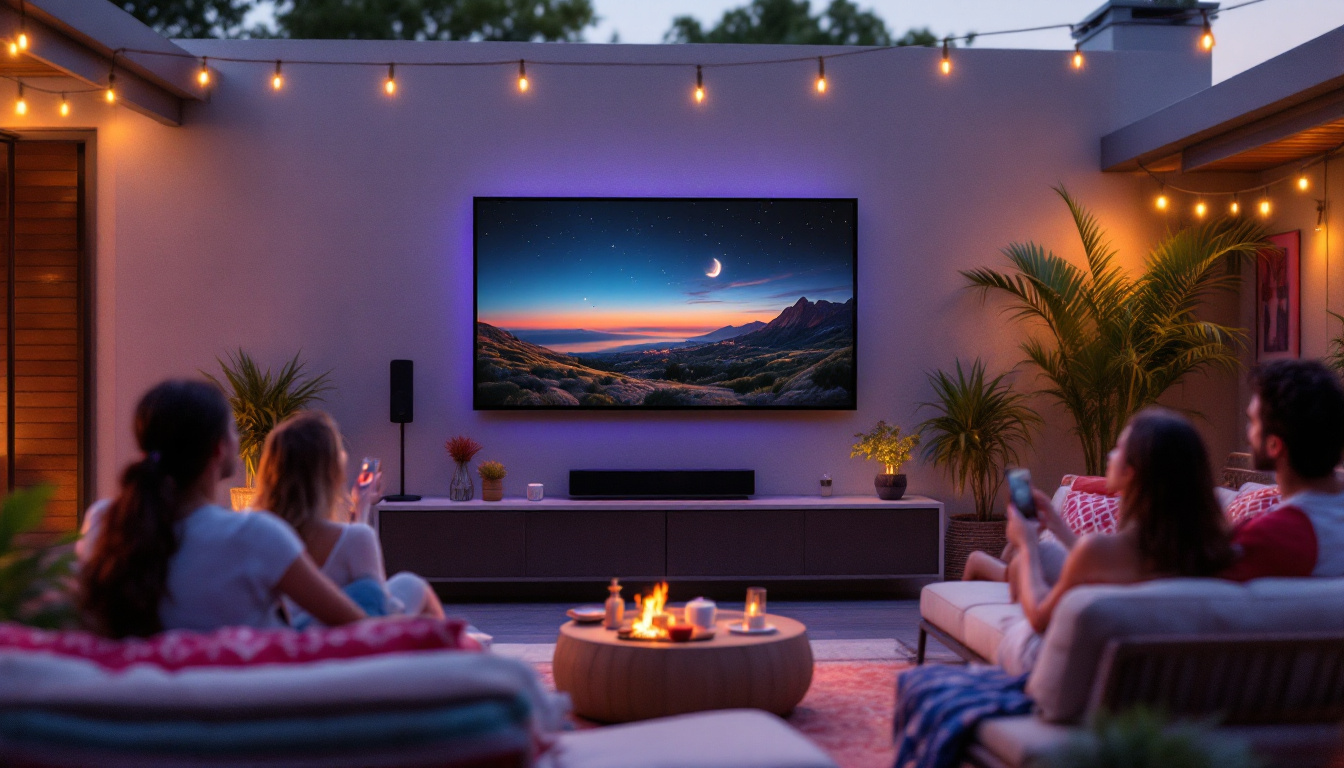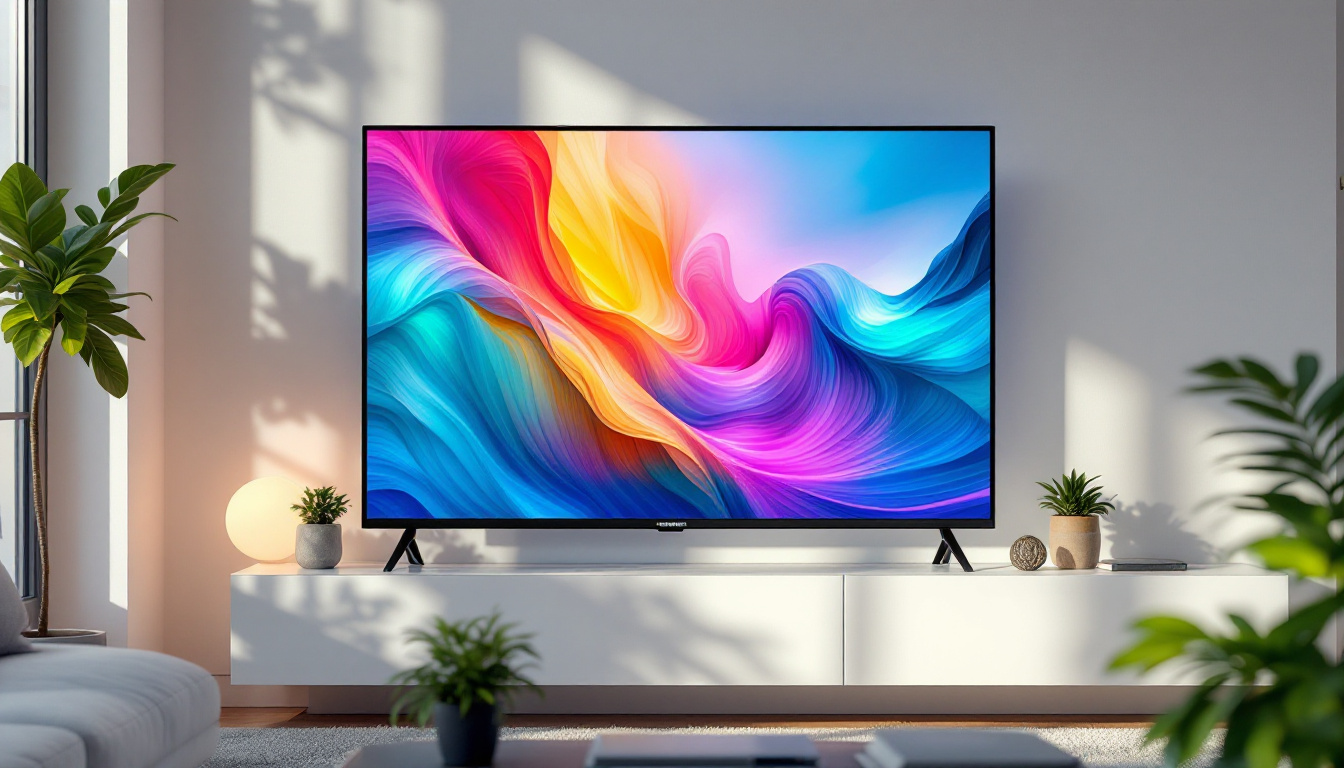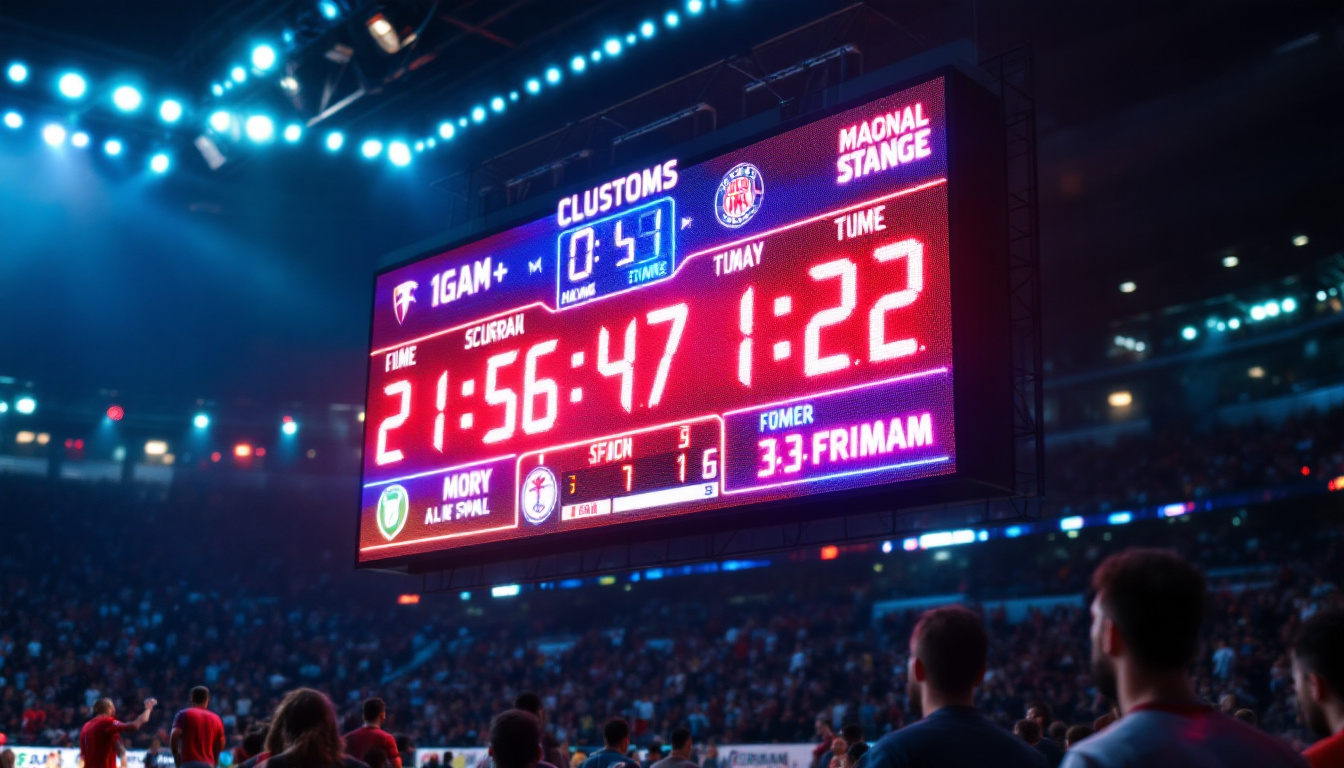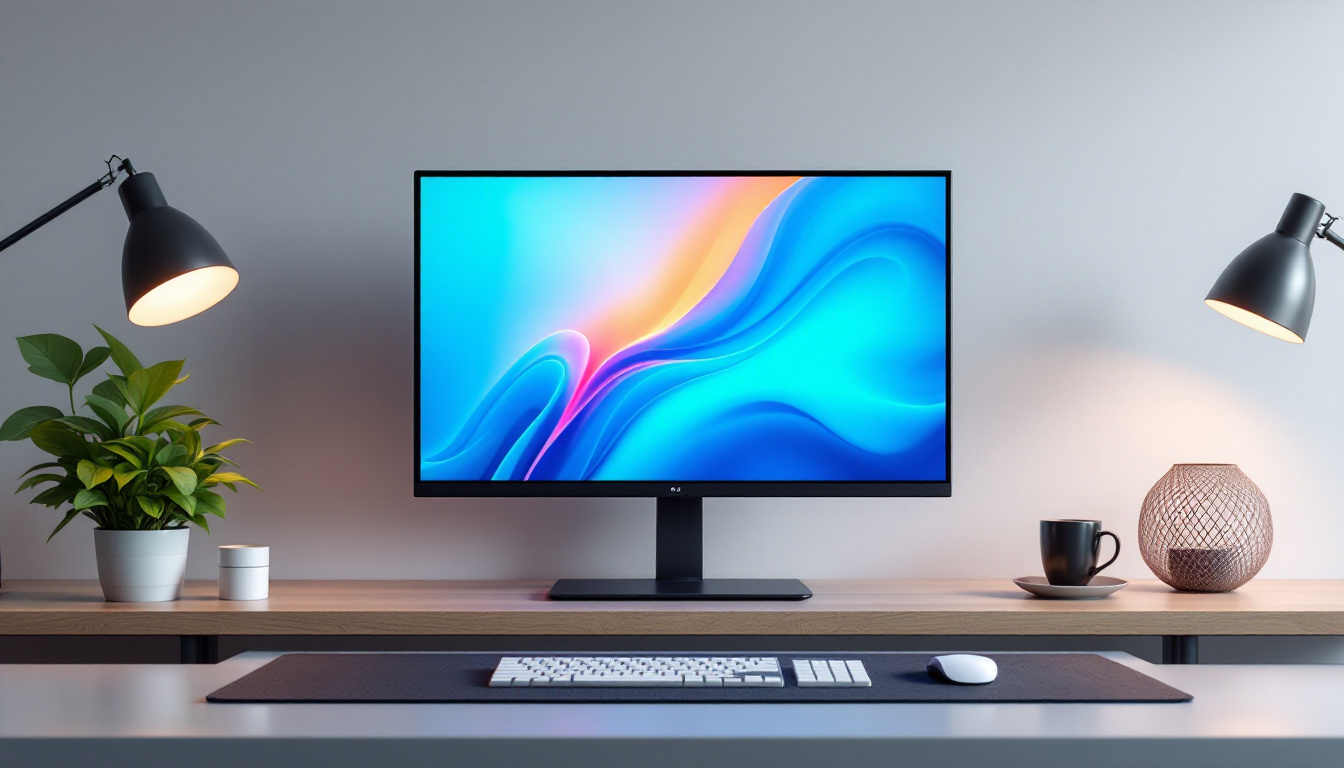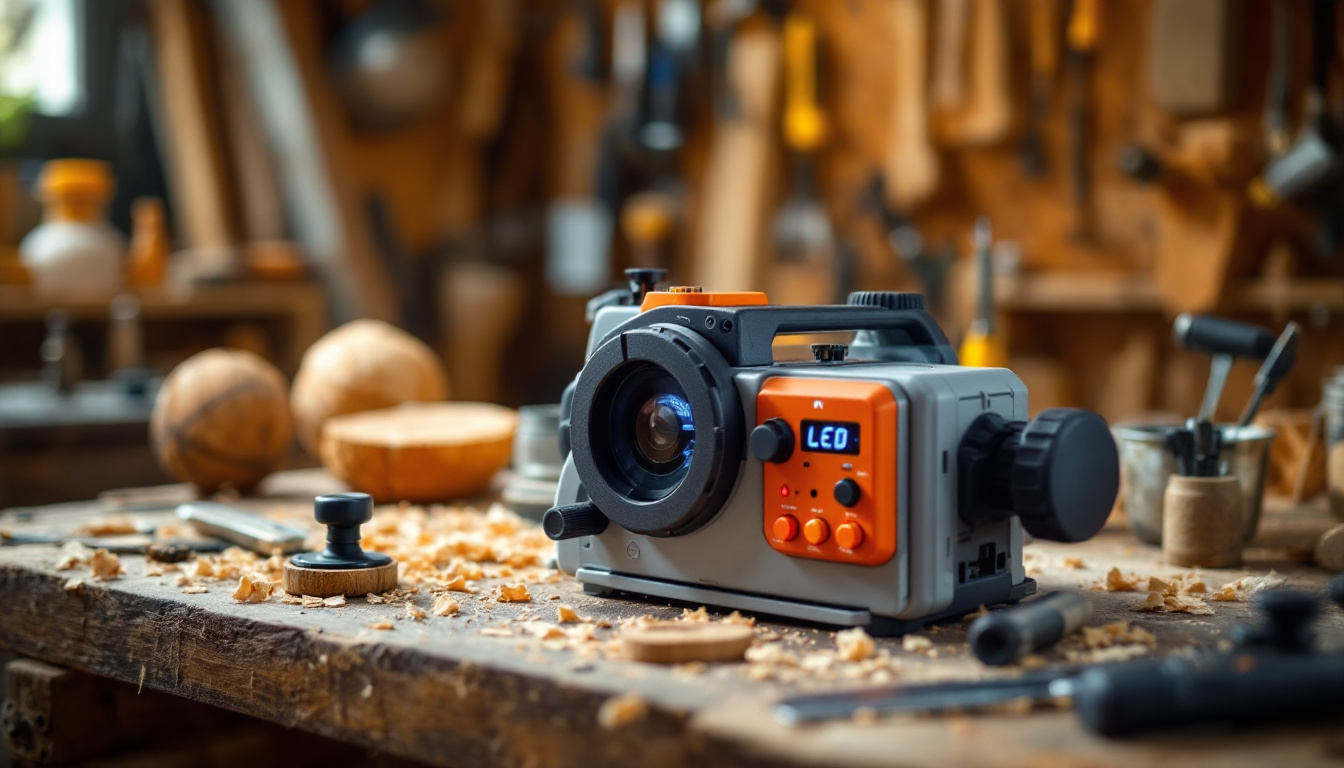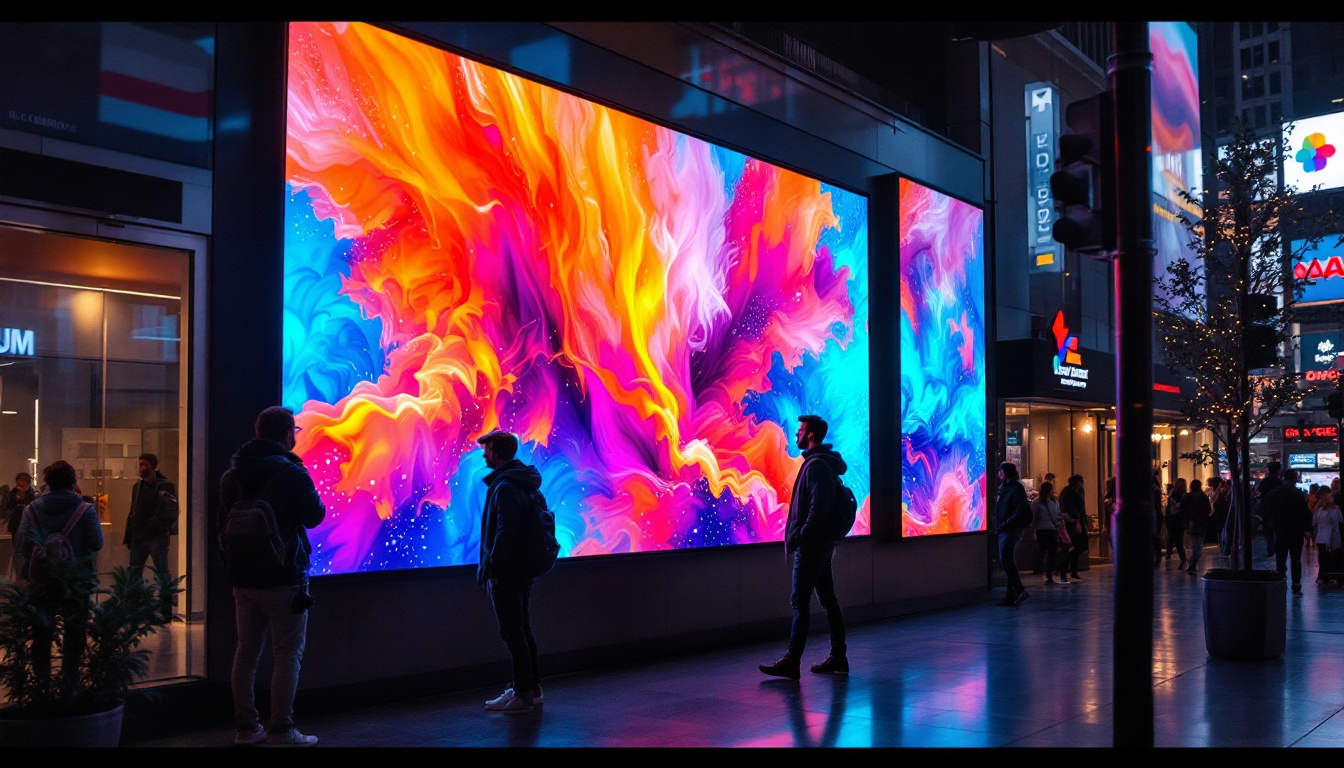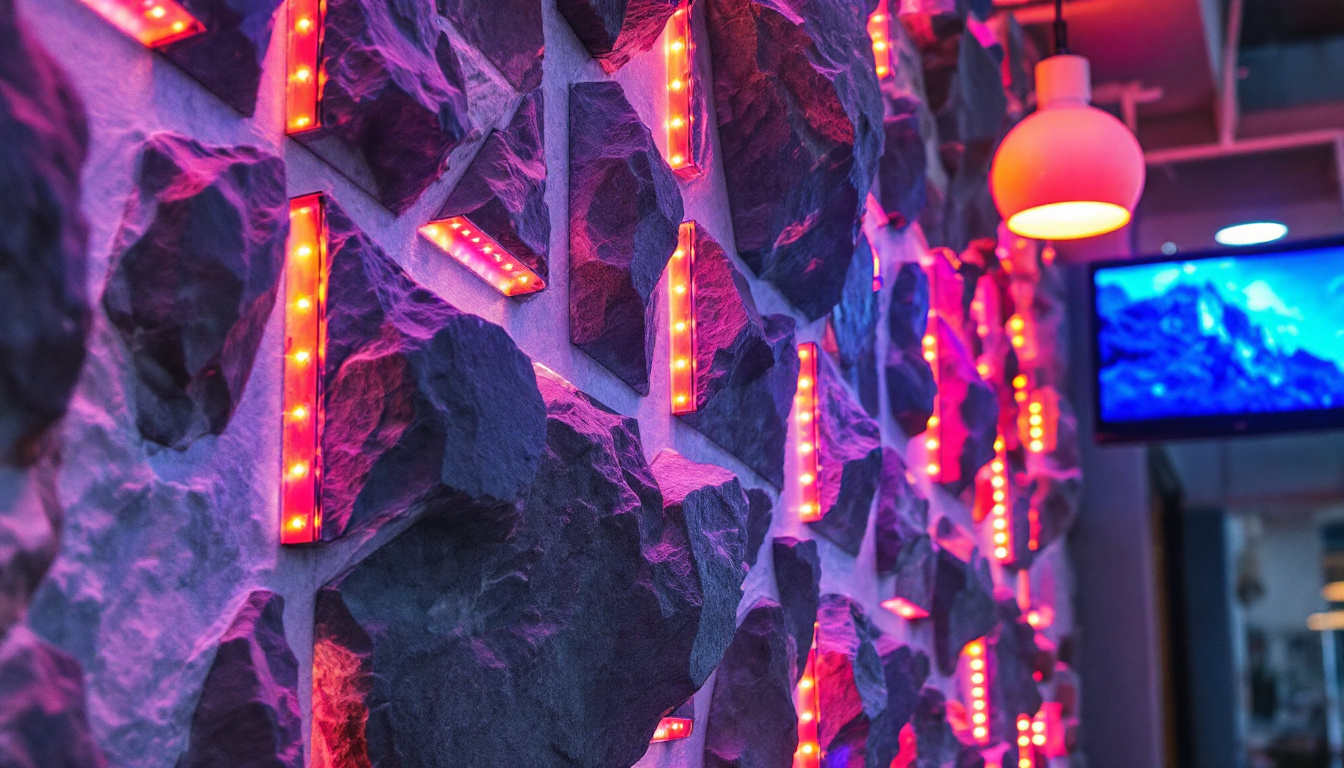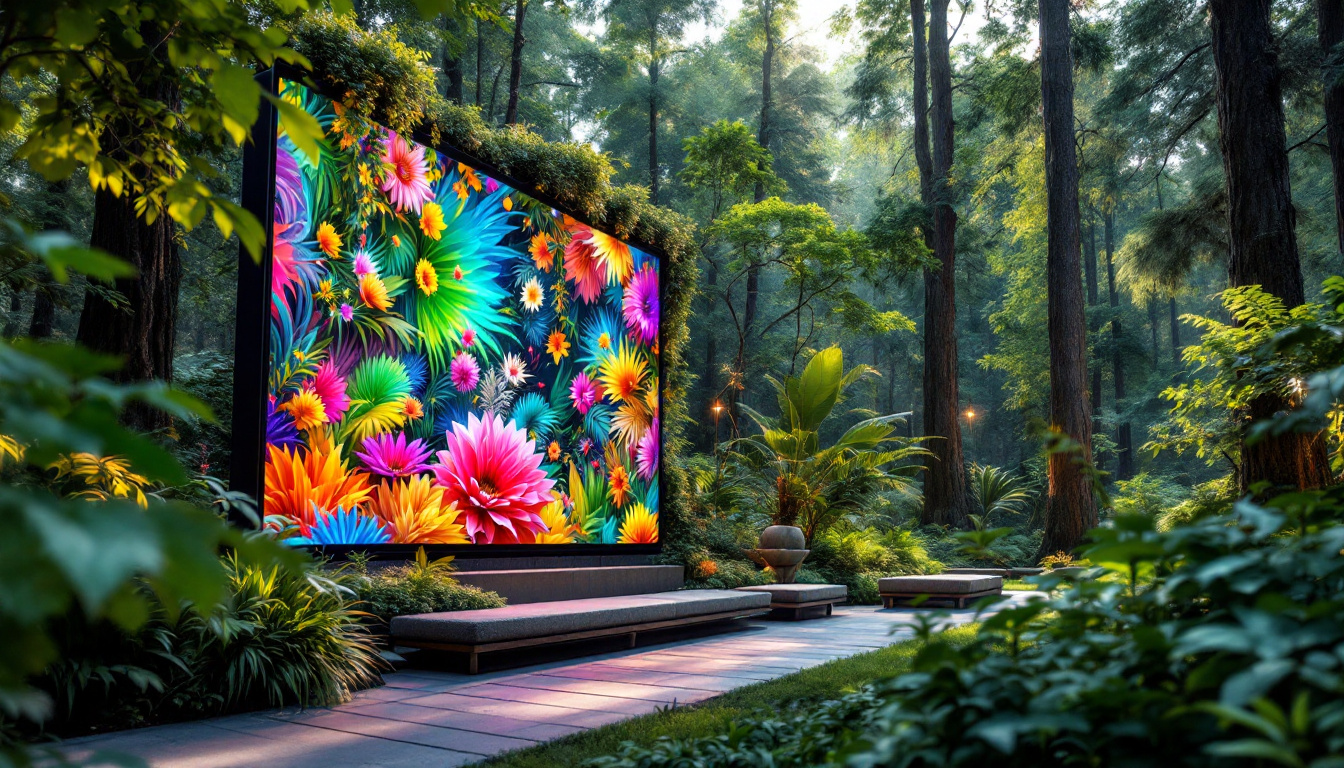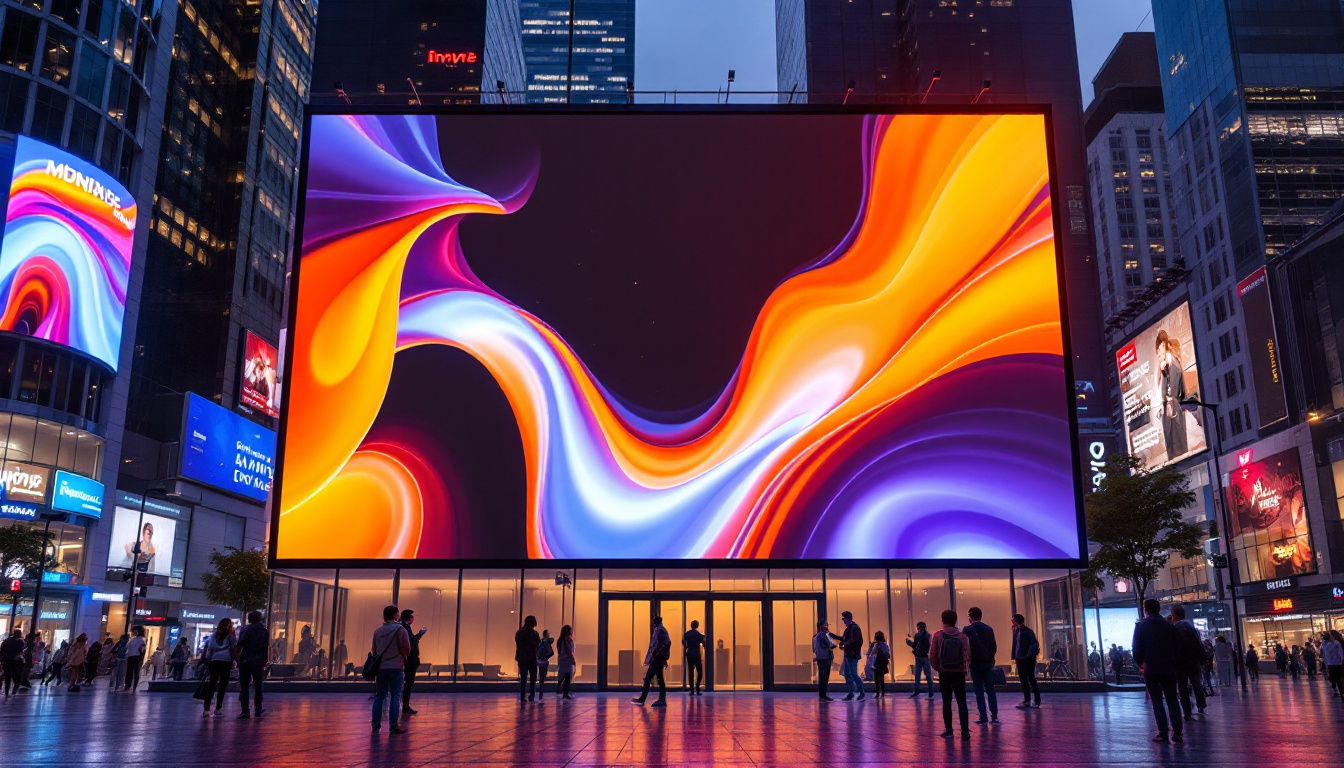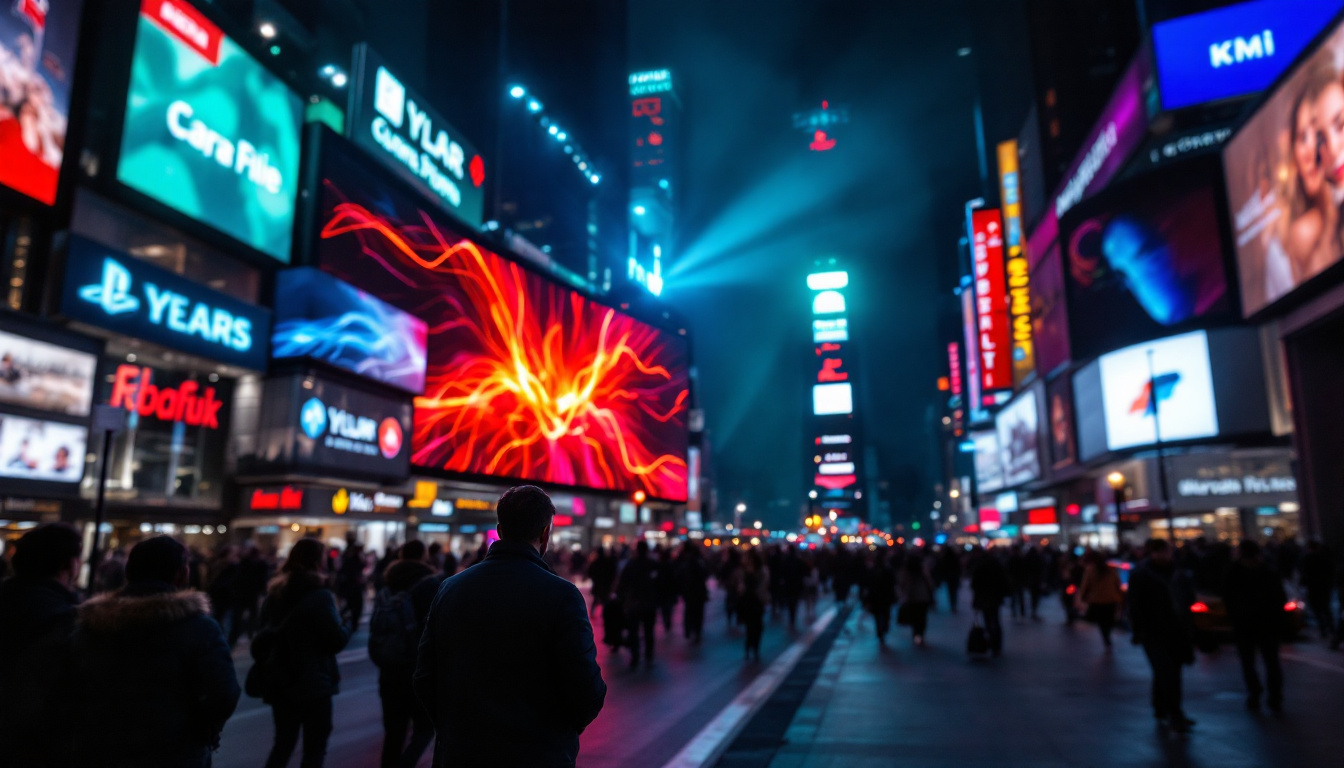Creating a media room in a small space can be a challenging yet rewarding endeavor. With the right design elements and technology, it is possible to transform a compact area into a cozy and functional entertainment hub. One of the most significant components of a modern media room is the LED display. This article will explore various media room ideas tailored for small spaces, focusing particularly on the advantages and applications of LED displays.
Understanding LED Displays
LED displays have revolutionized the way we consume media. They offer vibrant colors, high contrast ratios, and energy efficiency, making them an ideal choice for small media rooms. Unlike traditional televisions, LED displays can be slim and lightweight, allowing for flexible installation options. This adaptability not only enhances the aesthetic appeal of a room but also makes it easier to integrate technology into various interior designs, from modern minimalist to cozy traditional styles.
Advantages of LED Displays
One of the primary benefits of LED displays is their superior picture quality. The technology behind LED screens allows for deeper blacks and brighter whites, enhancing the viewing experience significantly. This is particularly important in smaller rooms where lighting can be an issue. Furthermore, many LED displays incorporate advanced technologies such as HDR (High Dynamic Range) and local dimming, which further improve the color accuracy and dynamic range, making even the most subtle details in movies and shows pop out.
Another advantage is their energy efficiency. LED displays consume less power compared to older technologies, which not only saves money on energy bills but also reduces the environmental impact. This energy efficiency is particularly beneficial for those who enjoy binge-watching series or hosting movie nights, as it allows for prolonged use without the worry of skyrocketing electricity costs. Additionally, many manufacturers are now focusing on sustainable production practices, ensuring that the entire lifecycle of the display—from production to disposal—minimizes environmental harm.
Space-Saving Designs
For small media rooms, the design of the LED display is crucial. Many modern LED screens come in ultra-slim designs that can be mounted on walls, freeing up valuable floor space. Additionally, some models offer flexible mounting options, such as tilting or swiveling, allowing viewers to adjust the screen for optimal viewing angles. This flexibility is particularly advantageous in smaller rooms where seating arrangements may vary, enabling everyone to enjoy a great view regardless of their position in the room.
Consider also the size of the display. A larger screen may seem appealing, but in a small space, it can overwhelm the room. A well-sized LED display can create a balanced look while still providing an immersive viewing experience. To achieve this balance, it’s essential to consider the viewing distance; a display that is too large can create a cramped feel, while one that is too small may not provide the cinematic experience desired. Many experts recommend calculating the ideal screen size based on the distance from the seating area to ensure comfort and enjoyment during viewing sessions. Additionally, incorporating sound systems that complement the display can further enhance the overall media experience, making even the smallest of rooms feel like a personal cinema.
Creative Layout Ideas for Small Media Rooms
Maximizing space in a small media room requires creativity and strategic planning. Here are some layout ideas that can help you make the most of your limited area.
Multi-Functional Furniture
In small spaces, every piece of furniture should serve multiple purposes. Consider a media console that not only holds the LED display but also provides storage for DVDs, gaming consoles, and other media equipment. Ottomans with hidden storage can double as seating and a place to stash blankets or games.
Additionally, foldable or expandable furniture can be a game changer. A wall-mounted desk can serve as a workspace during the day and be folded away when not in use, keeping the room uncluttered.
Zone the Space
Creating distinct zones within your media room can enhance both functionality and aesthetics. Use rugs to define the media area from the rest of the room. This not only helps in organizing the space but also adds a layer of comfort and style.
Lighting plays a crucial role in zoning as well. Consider installing dimmable LED lights or smart bulbs that can change colors and intensities, allowing for different moods depending on the activity—whether it’s movie night or a casual gathering.
Enhancing Acoustics in Small Spaces
Sound quality is just as important as visual quality in a media room. Small spaces can create unique acoustic challenges, but there are ways to enhance sound without compromising on space.
Soundbar Solutions
For small media rooms, a soundbar can be a perfect solution. These compact audio systems provide high-quality sound without taking up too much space. Many soundbars can be mounted on the wall, directly under the LED display, creating a seamless look.
Additionally, some soundbars come with built-in subwoofers, eliminating the need for bulky speakers that can clutter the room. This allows for a more streamlined setup while still delivering an immersive audio experience.
Acoustic Panels
Incorporating acoustic panels into the design can significantly improve sound quality. These panels absorb sound waves, reducing echo and enhancing clarity. They come in various designs, colors, and sizes, allowing you to choose options that complement your decor.
Strategically placing these panels around the media room can help create a more enjoyable listening experience, making movie nights and gaming sessions even more engaging.
Lighting Considerations for Media Rooms
Lighting is a critical element in any media room, especially in smaller spaces where natural light can be limited. The right lighting can enhance the viewing experience while also contributing to the overall ambiance of the room.
Layered Lighting Techniques
Implementing layered lighting can create a dynamic and flexible environment. Start with ambient lighting, such as recessed lights or ceiling fixtures, to provide general illumination. Then, add task lighting, like adjustable floor lamps or wall sconces, to focus on specific areas.
Finally, consider accent lighting to highlight architectural features or artwork. LED strip lights can be placed behind the LED display or along shelves to create a soft glow, adding depth and interest to the space.
Smart Lighting Solutions
Smart lighting systems allow for complete control over the room’s ambiance. With a smartphone app or voice commands, users can adjust brightness, color, and even set schedules for different lighting scenarios. This can be particularly useful for creating the perfect atmosphere for movie nights or gaming sessions.
Moreover, smart lights can synchronize with the LED display, enhancing the viewing experience by adjusting the room’s lighting based on the content being shown on screen.
Decorating Your Media Room
Decorating a small media room can be an enjoyable process, allowing for personal expression while ensuring functionality. The right decor can enhance the overall experience, making the space feel inviting and comfortable.
Wall Art and Decor
In a small media room, wall art can serve both decorative and functional purposes. Consider using framed posters of favorite movies or shows to create a themed atmosphere. Alternatively, a gallery wall can showcase personal photos or artwork, adding a unique touch to the space.
Incorporating shelves can provide additional storage while also serving as a display area for collectibles or books. Floating shelves can be particularly effective in small rooms, as they take up minimal space while still providing functionality.
Comfortable Seating Options
Comfort is key in a media room. In small spaces, consider seating options that are both stylish and functional. Modular sofas can be arranged in various configurations, allowing for flexibility depending on the number of guests.
Bean bags or floor cushions can provide additional seating without taking up much space, making them ideal for casual gatherings. Moreover, consider incorporating recliners that offer comfort and support, enhancing the overall viewing experience.
Integrating Technology in Small Media Rooms
Technology has become an integral part of any media room. In small spaces, it’s essential to integrate technology seamlessly to maintain an organized and clutter-free environment.
Streaming Devices and Smart TVs
Modern LED displays often come equipped with smart technology, allowing users to stream content directly without the need for additional devices. This can help reduce clutter and simplify the setup. However, if using external streaming devices, consider a media console with built-in cable management to keep wires hidden and organized.
Additionally, voice-controlled devices can enhance the user experience. Smart speakers can be used to control the LED display, lighting, and even the sound system, creating a cohesive and convenient entertainment environment.
Wireless Audio Systems
Wireless audio systems can eliminate the need for cumbersome cables, making them ideal for small media rooms. These systems can connect to the LED display and other devices via Bluetooth or Wi-Fi, providing high-quality sound without the mess of wires.
Many wireless speakers are compact and can be strategically placed around the room to create a surround sound experience, further enhancing the immersive quality of the media room.
Final Touches for Your Media Room
Once the major elements of the media room are in place, it’s time to focus on the final touches that will make the space truly yours. These small details can significantly enhance the overall atmosphere and functionality of the room.
Personalized Accessories
Incorporating personalized accessories can make the media room feel more inviting. Consider adding throw pillows, blankets, and rugs that reflect your style and preferences. These elements can add comfort and warmth to the space, making it a cozy retreat for relaxation and entertainment.
Additionally, consider using decorative boxes or baskets for storing remote controls, game controllers, and other small items. This not only keeps the room organized but also adds a decorative touch.
Creating a Snack Station
No media room is complete without a snack station. In small spaces, this can be as simple as a small cart or shelf stocked with popcorn, candy, and beverages. A mini-fridge can also be a great addition, providing easy access to drinks without the need to leave the room.
By creating a dedicated snack area, the media room can become a self-contained entertainment hub, allowing for uninterrupted movie nights and gaming sessions.
Conclusion
Designing a media room in a small space requires careful planning and creativity. By focusing on the advantages of LED displays, optimizing layout, enhancing acoustics, and incorporating thoughtful decor, it is possible to create a functional and inviting entertainment area. With the right technology and design elements, even the smallest spaces can be transformed into a cozy media haven.
Bring Your Media Room to Life with LumenMatrix
Ready to elevate your small space with a media room that defies expectations? LumenMatrix is at the forefront of LED display innovation, offering a wide range of solutions to create the ultimate viewing experience. From Indoor LED Wall Displays that make your favorite films come alive to Custom LED Displays tailored to your unique space, we have everything you need to captivate and engage. Don’t let size limit your imagination. Check out LumenMatrix LED Display Solutions today and transform your media room into a dazzling retreat.

